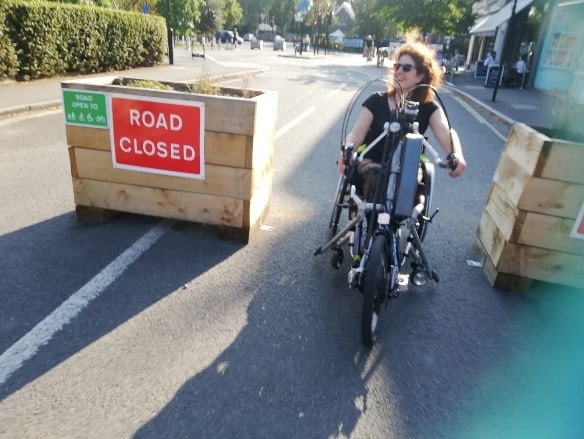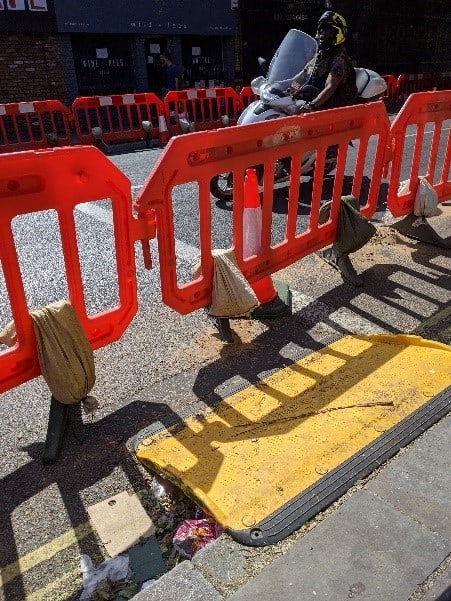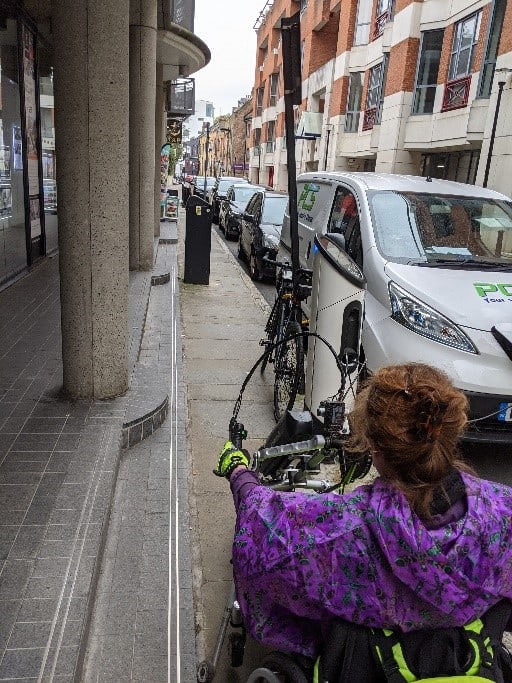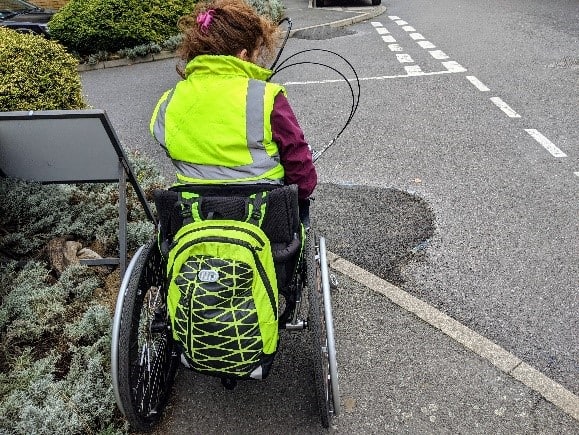Wheels for Wellbeing really likes the idea behind Low Traffic Neighbourhoods (LTNs). They’re designed to restrict traffic through residential areas and to enable more people to walk, wheel, or cycle, without preventing anyone from driving to any particular point within the neighbourhood.
But LTNs have divided opinion on social media and in real life. Some LTNs have left some Disabled people feeling trapped, ignored or abandoned, experiencing increased anxiety and stress and decreased mobility.
In this two-part blog series, we’re taking a closer look at LTNS – the Good, the Bad, and the Ugly – and consider some solutions for the future.
THE GOOD

At Wheels for Wellbeing, we like the aim: to reduce traffic and congestion, make streets safer and more pleasant for residents; improve the quality of the air we breathe by encouraging more people to travel actively around their neighbourhoods. Whilst drivers would not be prevented from accessing any address in an LTN, using the car for short journeys would become less attractive.
For Disabled residents, this should mean:
- Cleaner air, helping people with respiratory problems
- Less congestion for those Disabled people who rely on door-to-door transport
- Safer streets to walk, wheel, or cycle along
- More opportunities for Disabled people to be active, improving their physical and mental health and allowing greater independence
For some, LTNs have been transformative. But by all means not for everyone.
THE BAD
LTNs are well-intentioned, but that doesn’t mean they’ve always been well-designed and well-implemented. Some Disabled people have experienced:
- Bollards/planters making streets too narrow to get through on some non-standard cycles
- Blocked drop-kerbs
- Excessively long vehicular routes to some addresses
- Increased traffic and pollution on some boundary roads
Some of the problems have stemmed from the fact that most recent LTNs were introduced under emergency powers, with little or no consultation:

- Insufficient information for residents, or only in inaccessible formats
- Insufficient or inaccessible opportunities to offer feedback
- Insufficient focus on residents with the greatest needs, or those least able to adapt quickly to change
This meant that some Disabled people could not plan for the disruption or raise concerns in advance when routes through their neighbourhood were suddenly blocked. For others, the longer distance they had to drive was not mitigated by decreased congestion, especially as many people stopped trusting public transport and turned to their cars in droves. Similarly, on some boundary roads, a lack of modal shift from the majority of road users led to increased congestion and pollution. The stress, anxiety, and lack of proper engagement left some Disabled people feeling abandoned and ignored. For them, LTNs have been more “Bad” than “Good”.
THE UGLY

In fact, many of the reasons behind the anger felt by Disabled people at the introduction of LTNs have nothing to do with LTNs: they stem from the ugly reality of pre-existing, multiple barriers to safe walking/wheeling/cycling for Disabled people. To such an extent that, reducing one’s reliance on motorised transport in the short term is simply impossible to imagine:
- Missing drop-kerbs
- Narrow, cluttered pavements
- Pavement parking
- Inconsistently applied or missing tactile paving
- Sharply cambered footways (caused by multiple driveways, tree roots etc.)
- Limited access to light-weight, independently manoeuvrable wheelchairs or outdoors powered wheelchairs
- Lack of seating at regular intervals
- Inaccessible public transport hubs
- Insufficient financial support or advice for Disabled people to access non-standard cycles
- All compounded by the fact that few local shops have step-free entrances etc.
In short, the sudden introduction of LTNs under emergency legislation compounded the pre-existing barriers to active travel for Disabled people. They were the straw that broke the camel’s back when causing already limited transport choices to be suddenly disrupted.

In part two, intended release on Tuesday 7th December, we’ll explore some possible solutions for the bad and the ugly of LTNs.
